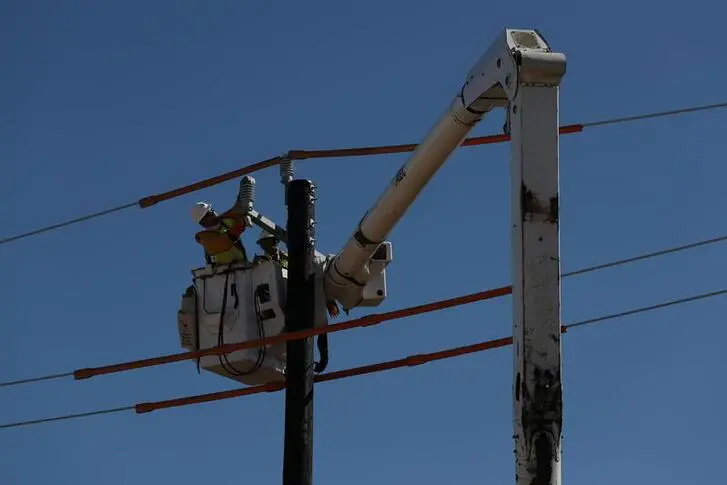PHOTO
The energy mix for electrical power sources in Texas includes 46 percent natural gas, 23 percent wind, 18 percent coal, 11 percent nuclear, and 2 percent solar. Renewable energy is therefore only responsible for producing 25 percent of electricity in the state, which has a power grid isolated from the rest of the networks in the US.
Power transmission from the energy sources of gas, wind, coal, nuclear, and solar were all adversely affected by the recent snowstorms and icy winter weather that sent temperatures falling in some parts of Texas to minus 18 degrees.
With the state relying almost entirely on its own power grid it was unable to receive much in the way of electricity imports from neighboring states to make up for shortfalls due to the large number of outages.
Both fossil fuel and renewable energy sources have been blamed for causing the recent catastrophic electricity outages in Texas amid one of the worst snowstorms in the state since February 2011.
Was the reason for the electricity supply outages due to the failure of gas power plants, wind turbines, coal, or nuclear power generators? Or was it because the electricity transmission lines were simply unable to cope with high demands during a severe weather event, even in the most energy-rich state in the US?
With gas being the largest source of energy in Texas, frozen nuclear plants and wind turbines may not bear the largest share of responsibility for the collapse in power supplies.
However, it has been widely claimed that gas pipes ill-equipped for cold weather conditions were the main reason why millions of Texans lost power as temperatures plunged. But the so-called “freeze-offs” in Texas pipelines did not cause as much severe disruption to gas distribution in similar pipelines in other states hit by the big freeze.
Texas is the largest gas producer and consumer state, but it does not usually have to deal with such severe snowstorms. There are many states that have taken precautionary measures and invested in equipment to safeguard against cold weather, but Texas has so far not followed suit.
If the infrastructure and pipelines in Texas were unprepared for the snowstorms, why was the situation completely different for the residents of El Paso county in the far western corner of the state? The reason was because the county is not reliant on the Texas electricity grid and has an electrical connection to the networks of neighboring states.
Also, after the heavy snows of 2011, El Paso undertook works to protect its distribution lines from power stations and reinforce its gas pipelines from severely cold weather. These precautions were in addition to installing backup diesel power generators for emergency situations.
While there is no rational behind blaming any one energy source in Texas solely responsible for the recent blackouts, it is clear there has been a laxity in preparing infrastructure and pipelines to withstand heavy snowstorms.
• Faisal Faeq is an energy and oil marketing adviser. He was formerly with OPEC and Saudi Aramco. Twitter:@faisalfaeq
Copyright: Arab News © 2021 All rights reserved. Provided by SyndiGate Media Inc. (Syndigate.info).












